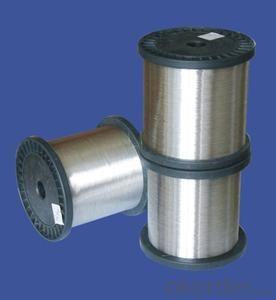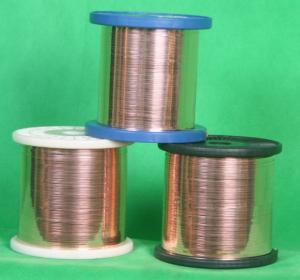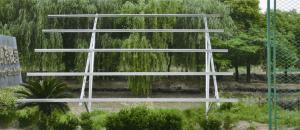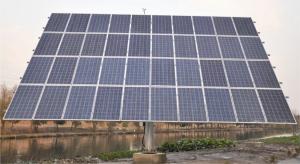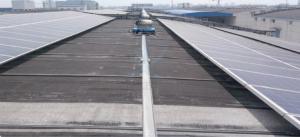Connect-Inter Ribbon-Machine Welding 0.2*1.6mm
- Loading Port:
- China Main Port
- Payment Terms:
- TT or LC
- Min Order Qty:
- -
- Supply Capability:
- -
OKorder Service Pledge
OKorder Financial Service
You Might Also Like
Structure
We produce custom engineered solar tabbing and bus wire helping to attain the highest efficiencies possible for each unique module design. Our Research and Development team can assist you with your needs evaluation and our world-wide manufacturing facilities are strategically located for large volume production.
Feature
The Flux should be compounded and processed in such a manner as to be uniform in quality and
should be free from deleterious material and other details that will after life serviceability or appearance.
Cold Rolling Mills for manufacturing Photovoltaic (PV) Ribbon:
Cold Rolling Mills for manufacturing Photovoltaic Ribbon
This machine is for making Bare flat copper conductors which is using PV Ribbon Wire , Tinned plated flat copper conductors which is using FFC or materials and it was designed to make the best quality products with high productivity as well as easy to control.
Machine capacity
Tinned plated flat copper conductors which is using FFC
Images
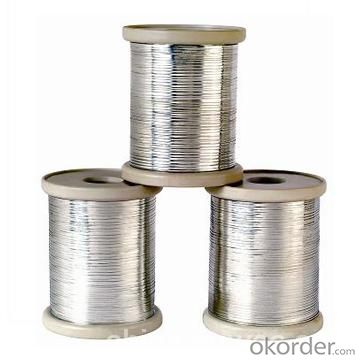
Specifications
Visual Inspection
The visual inspection is using perception to inspect the PV Ribbon Wire. The important
aspect of this inspection is the coated copper must free from:
1).Whether or not there is any flaw is checked.
2).Whether or not its surface has uniform lustrous hue be inspected.
3).Whether or not its surface free from thick.
Coating Thickness Test
The measurement to PV Ribbon Wire is using the external micrometer (0. 001mm)or its equivalents.
The test piece of about 250px long shall be taken and the OD of the wire shall be measured at
3 points.Each point shall be measured 2 times
Thickness Of Solder Coated Wire.After the 3 points of wire be measured,dip the test piece into nitric acid for about 5 minutes,the diameter of core wire shall be measured. One half of the two measurements will give the thickness of solder coated wire.
*Recommended temperature of soldering iron tip : 280~320°C
( According to different thickness, adjust the suitable temperature of soldering )
FAQ
Q:How to guarantee the quality of the products?
A:We have established the international advanced quality management system,every link from raw material to final product we have strict quality test;We resolutely put an end to unqualified products flowing into the market. At the same time, we will provide necessary follow-up service assurance.
Q:Can we visit your factory?
A:Surely, I will arrange the trip basing on your business schedule.
Q:Which payment terms can you accept?
A:T/T,L/C,Moneygram,Paypal are available for us.
- Q:Outdoor solar energy products, how can we do the process of IP65 level, the design of the water which should be noted that what? Beg enlighten heroes!
- Third, the less the number of parts as possibleFourth, when the whole is a way to allow glue
- Q:Can a solar inverter be used with building-integrated photovoltaic systems?
- Yes, a solar inverter can be used with building-integrated photovoltaic systems. The solar inverter converts the direct current (DC) electricity generated by the photovoltaic panels into alternating current (AC) electricity that can be used to power the building or be fed into the grid.
- Q:How do solar vacuum tubes compare to evacuated flat-plate collectors?
- Solar vacuum tubes and evacuated flat-plate collectors are both effective solar thermal technologies, but they have some key differences. Solar vacuum tubes have a higher efficiency and perform better in colder climates due to their cylindrical shape and vacuum insulation. They can also capture sunlight from different angles throughout the day. On the other hand, evacuated flat-plate collectors have a larger surface area and are better suited for warmer climates. Additionally, flat-plate collectors are typically more affordable and easier to install. Ultimately, the choice between the two depends on specific requirements, climate conditions, and budget considerations.
- Q:Are solar vacuum tubes suitable for areas with limited space for installation?
- Yes, solar vacuum tubes are suitable for areas with limited space for installation. These tubes are compact and can be installed vertically or horizontally, making them ideal for areas where space is a constraint. Additionally, they can be mounted on rooftops or walls, maximizing the use of available space effectively.
- Q:What are the different types of anti-reflective coatings used on solar silicon wafers?
- There are primarily two types of anti-reflective coatings used on solar silicon wafers: silicon nitride (SiN) and titanium dioxide (TiO2) coatings. These coatings help reduce the reflection of sunlight, thereby increasing the efficiency of solar cells by allowing more light to be absorbed.
- Q:Can a solar pump be used in areas with limited access to water flow meters?
- Yes, a solar pump can still be used in areas with limited access to water flow meters. While water flow meters are useful for measuring the volume of water being pumped, they are not essential for the functioning of a solar pump. Solar pumps can be designed to operate based on the available sunlight and automatically adjust their pumping speed or pressure accordingly. The absence of water flow meters may limit precise measurement and monitoring of water usage, but it does not prevent the use of a solar pump in areas with limited access to flow meters.
- Q:How much energy can a solar panel generate?
- The amount of energy a solar panel can generate depends on several factors, including the size and efficiency of the panel, the amount of sunlight it receives, and the geographical location. On average, a standard residential solar panel can generate between 250 to 400 watts of power per hour, or around 2 to 4 kilowatt-hours per day. However, larger commercial or utility-scale solar panels can generate much higher amounts of energy, ranging from several kilowatts to several megawatts.
- Q:Vacuum tube for solar collectors
- Vacuum tube according to the type of heat absorber material, can be divided into two categories: one is the glass heat absorber vacuum tube (or all glass vacuum tube), one is the metal heat absorber vacuum tube (or glass - metal vacuum tube). Heat pipe vacuum tube is a metal heat absorber vacuum tube, which consists of heat pipe, heat absorber, glass tube and metal cover and other major components.
- Q:Can solar collectors be used in steel mills?
- Solar collectors have the potential to be employed in steel mills. Options like solar thermal systems or photovoltaic panels can be utilized in steel mills to generate electricity or heat energy for different industrial purposes. By harnessing the power of sunlight and converting it into usable energy, these collectors can reduce reliance on fossil fuels and decrease greenhouse gas emissions. In steel mills, solar collectors can be integrated into the existing infrastructure to provide renewable energy for various processes, including powering machinery, heating water, or driving specific stages of the steel production process. Moreover, the implementation of solar collectors in steel mills can lead to reduced operational costs and enhanced sustainability within the steel production industry.
- Q:How does the efficiency of solar panels vary with temperature?
- The efficiency of solar panels varies inversely with temperature. As the temperature increases, the efficiency of solar panels decreases. This is because solar panels work by converting sunlight into electricity through the photovoltaic effect. When the temperature rises, the electrons in the solar cells gain more energy, which can lead to an increase in electron movement and resistance within the panel. The efficiency of solar panels is typically measured by their power output in relation to the amount of sunlight received. As the temperature rises, the power output of solar panels tends to decrease, resulting in reduced efficiency. This decrease in efficiency is known as the temperature coefficient. The temperature coefficient represents the percentage change in power output for every degree Celsius increase in temperature. It is usually expressed as a negative value, indicating the decrease in efficiency as the temperature rises. Different types of solar panels have different temperature coefficients, which can range from -0.2% to -0.5% per degree Celsius. To counter the decrease in efficiency caused by higher temperatures, solar panels are often designed with cooling mechanisms or placed in locations with good ventilation. These measures help dissipate excess heat and maintain a more favorable operating temperature, thereby improving the overall efficiency of the solar panels. In summary, the efficiency of solar panels decreases with increasing temperature due to the temperature coefficient. It is important to consider temperature effects when designing solar panel systems and implement measures to mitigate the decrease in efficiency caused by higher temperatures.
1. Manufacturer Overview |
|
|---|---|
| Location | |
| Year Established | |
| Annual Output Value | |
| Main Markets | |
| Company Certifications | |
2. Manufacturer Certificates |
|
|---|---|
| a) Certification Name | |
| Range | |
| Reference | |
| Validity Period | |
3. Manufacturer Capability |
|
|---|---|
| a)Trade Capacity | |
| Nearest Port | |
| Export Percentage | |
| No.of Employees in Trade Department | |
| Language Spoken: | |
| b)Factory Information | |
| Factory Size: | |
| No. of Production Lines | |
| Contract Manufacturing | |
| Product Price Range | |
Send your message to us
Connect-Inter Ribbon-Machine Welding 0.2*1.6mm
- Loading Port:
- China Main Port
- Payment Terms:
- TT or LC
- Min Order Qty:
- -
- Supply Capability:
- -
OKorder Service Pledge
OKorder Financial Service
Similar products
New products
Hot products
Related keywords
